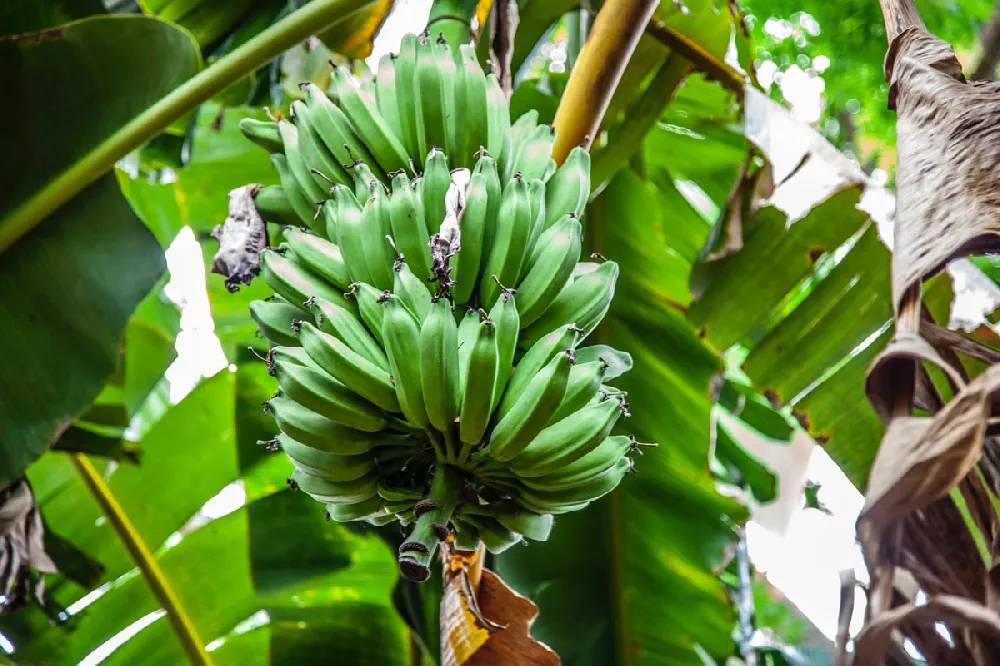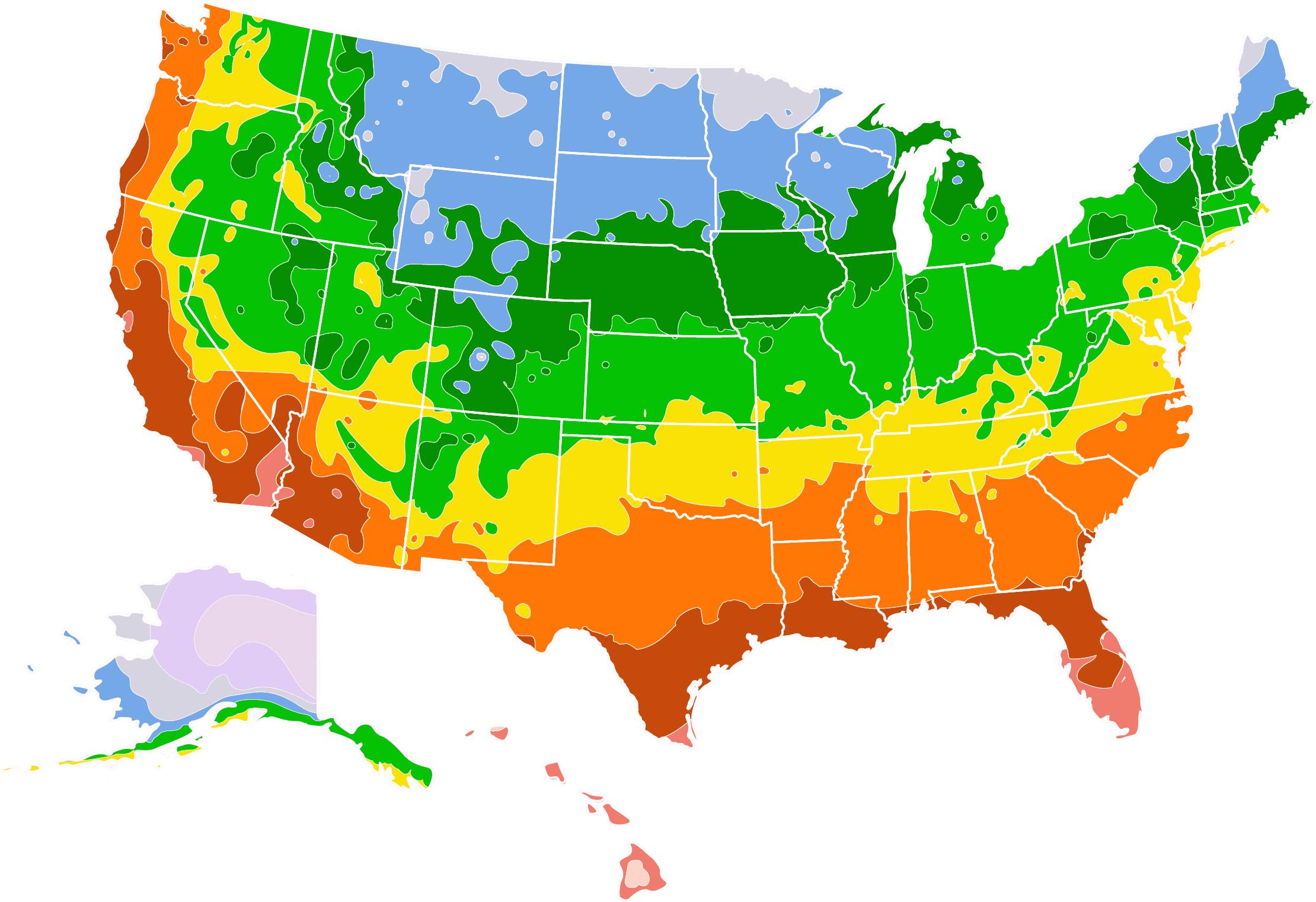Puerto Rican Plantain Banana Tree for Sale - Buying & Growing Guide
Few garden sights are more exciting than seeing a tree you raised carrying bunches of ripe plantains for you to enjoy, and that is precisely what the Puerto Rican plantain banana tree will provide for you. This tree, known botanically as Musa 'Puerto Rican Plantain,' comes from the hotter regions of the world but survives in colder zones if you know how to overwinter it in a container. This plant also shows a lot of toughness, with its ability to withstand wind, drought, and more, all while offering some of the sweetest fruits you can find. These are some highlights of the Puerto Rican plantain banana tree:
- Grows outdoors and in containers.
- Fruits have a sweet and favorable texture compared to similar ones.
- Can survive in strong winds and during droughts.
Enter your zip code to find nearby stores that may carry this plant.
Plant Care
Sunlight

This plant typically needs full sun, but it may survive partial shade in some locations.
Watering
Water when the first few inches of soil are dry, rather than on a specific schedule.
Fertilizing

Feed this plant often — about once per month — with a balanced fertilizer.
Planting and Care
Planting instructions
If you live in zone 9 or a hotter region, you can plant your Puerto Rican plantain banana tree outdoors in the ground where there is full sunlight. However, outside of southern Texas, southern Florida, and California, growing this plant in a container is the only viable option. Choose a large container capable of accommodating the entire root system and fill it with nutrient-rich potting soil.
Watering and nutrients
The best way to water a Puerto Rican plantain banana tree is to monitor the soil moisture. Once the first 1 to 3 inches of soil has dried out, add water. When watering Puerto Rican plantain banana trees that grow in containers, soak the soil until water flows through the drainage hole at the bottom of the container. These plants also need plenty of fertilizer throughout the growing season. Give your Puerto Rican plantain banana tree a balanced fertilizer blend once every month for the best growth.
Pollination
The Puerto Rican plantain banana tree is similar to a banana tree, which is a close genetic relative not requiring pollination to produce fruit. This unique feature makes plantains and bananas different from most other fruiting plants. The Puerto Rican plantain banana tree has flowers that are unique and complex. Fruit develops without any outside assistance when the plant is mature enough.
Pruning
These plants have a relatively short life span, so there isn’t much need for pruning a Puerto Rican plantain banana tree . While this plant matures, your only pruning goal should be to remove any leaves that are clearly dead or are harboring disease. But even if you don’t remove spent leaves, there is a good chance your Puerto Rican plantain banana tree will be successful in producing a harvest full of tasty plantain fruits.
Pests, diseases, and animals
If you choose to grow a Puerto Rican plantain banana tree, it would be good to familiarize yourself with the many potential health risks . Aphids, banana weevils, and scale insects are some of the most likely creatures to cause an infestation, while fungal infections can come in the form of anthracnose, rot, and wilt. There is also a virus called the banana bunchy top virus which can affect the Puerto Rican plantain banana tree.
Harvesting
Many fruit-bearing trees will offer you fruit once per year on a recurring basis. However, the Puerto Rican plantain banana tree will produce one single harvest that will take more than a year to develop. After about a year or more of healthy growth, your Puerto Rican plantain banana tree will begin to flower. Following that stage, it will be another six months before the fruits mature into a harvestable form to enjoy.
Achieving maximum results
The lack of pollination needed for Puerto Rican plantain banana trees to produce fruit is confusing to many, but it is not a process you need to understand fully. Instead, it is good to know that pollination is a detriment to these fruits, and it needs to be prevented from happening at all costs. If an insect pollinates your Puerto Rican plantain banana tree, you can expect it to develop fruits with too many seeds and too little edible flesh.
FAQs
How many times will a Puerto Rican plantain banana tree produce fruit?
Unlike other fruiting plants, the Puerto Rican plantain banana tree will only produce a single harvest in its lifetime. This same phenomenon is true for all plantain and banana trees. These plants take more than a year to develop their fruits, which often come in large bunches. After the bunches of fruits are off this plant, you can cut the plant down as it will no longer produce for you.
How large do Puerto Rican plantain banana trees grow?
The Puerto Rican plantain banana tree grows to be less than 10 feet tall. This short height is partly because this plant's life cycle is often completed in about two years total. The small size makes the Puerto Rican plantain banana tree a great option for those with minimal growing space.
What can you do with plantain fruits?
There are many things you can do with a plantain fruit once it is harvested from your tree. The most obvious way to enjoy these fruits is to peel their outer layer and eat them raw. However, there are many other delicious ways to make plantains. Baking and frying are two of the most popular methods of preparing these fruits. But no matter which approach you take, you're sure to enjoy the distinct sweetness that the Puerto Rican plantain banana can offer.
Compare Similar Products
You can't add more Product Name - Product size to the cart.
OK









